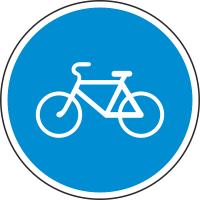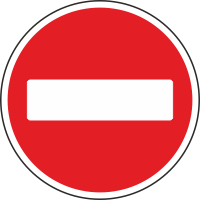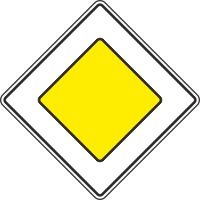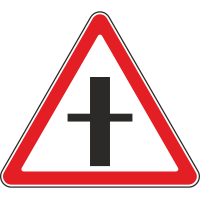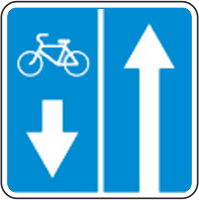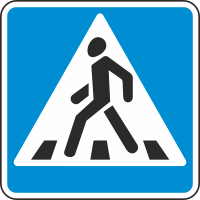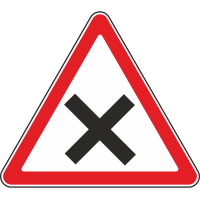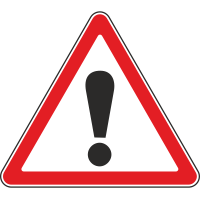Here are the main signs that a cyclist needs to know.
4.5 | «Bike path or bike lane» Only bicycles, electric scooters and small electric vehicles are allowed. If there is no sidewalk or footpath, pedestrians can also move along the bike path. |
4.5.1 | «The end of a bike path or bike lane» A sign crossed out with a red stripe means that an intersection has begun, where the action of the sign ends or the track has ended. |
4.5.4 — 4.5.5 | «Pedestrian and bicycle paths with traffic separation» Paths designed for the joint movement of pedestrians, bicycles, electric scooters, small electric vehicles, when the streams of pedestrians, bicycles, electric scooters, small electric vehicles are divided into independent streams. |
4.6 | «Footpath» Only pedestrians are allowed to move. But, in some cases, cyclists have the right to move along footpaths. |
5.48 | «Pedestrian zone» The place where the territory (road section) begins, where only pedestrians are allowed to move. Cyclists up to the age of 14 can also move around the pedestrian zone. Older cyclists—in special cases described in the traffic regulations. |
5.49 | «The end of the pedestrian zone» The peculiarity of this sign is that its action does not stop at the intersection. The end of the pedestrian zone is marked with a special sign: |
3.1 | «Entry is prohibited» Entry of all vehicles is prohibited. Including cyclists. |
3.2 | «Traffic is prohibited» The movement of all vehicles is prohibited. But if you work or live in the area of the sign, you can safely drive. |
3.9 | «Cycling is prohibited» The movement of bicycles, electric scooters and small electric vehicles is prohibited. But the sign does not prohibit driving a bicycle with your hands on the sidewalk or footpath, and in their absence — on the right side of the road. |
5.1 | «Motorway» Cyclists are strictly prohibited from entering under these signs. |
5.3 | «A road for cars» Cyclists are strictly prohibited from entering under these signs. |
2.1 | «The main road» A road on which the right of free passage of unregulated intersections is granted. Moving along the main road, remember that cars with sirens and beacons should be allowed to pass from adjacent roads: ambulances, firefighters and police. |
2.2 | «The end of the main road» |
2.3.1 — 2.3.7 | «Intersection with a secondary road» Grants the right of preferential passage of an unregulated intersection to vehicles located on the main road. At such intersections, overtaking is allowed on the main road in relation to the one being crossed. But cyclists should make sure that drivers see them when overtaking or turning. |
2.4 | «Give way» Cyclists must give way to any vehicle moving along the intersected road. |
2.5 | «It is forbidden to move without stopping» It is forbidden to move without stopping in front of the stop line, and if there is no stop line, in front of a sign or the edge of the intersected carriageway. |
5.10.5 | «A road with a lane for cyclists» A road where cyclists can ride along a specially designated lane towards the flow of traffic. |
5.10.7 | «The end of the road with a lane for cyclists» |
5.16.1 — 5.16.2 | «Pedestrian crossing» Transport drivers are required to let pedestrians and cyclists pass. |
1.6 | «Intersection of equivalent roads» The order of passage of such intersections is very simple—you pass everyone who crosses the intersection to your right, then cross it yourself. Overtaking is prohibited at the intersection of equivalent roads! |
1.22 | «Intersection with a bike path» Cyclists riding on the bike path must give way to any vehicles moving along the road, as well as other cyclists. |
1.30 | «Other hazards» The sign is installed in front of sections of roads where hazards are not provided for by other warning signs. |
| «Traffic lights for regulating the movement of cyclists» If the traffic light signal is made in the form of a bicycle silhouette, then its effect applies only to cyclists. A traffic light with round signals of a reduced size can also be used, complemented by a rectangular white sign with a black bicycle image. |
